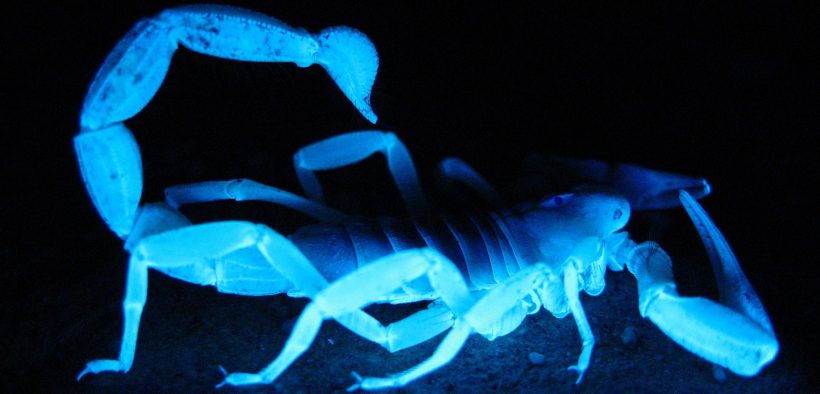Scorpion Venom May Be New Breakthrough in Brain Tumor Imaging

“With this fluorescence, you see the tumor so much clearer because it lights up like a Christmas tree.”
Researchers used a synthetic form of scorpion venom to illuminate brain tumors via a new imaging method in a recent clinical trial.
Developers used a high-sensitivity near-infrared camera combined with the imaging agent tozuleristide, or BLZ-100 to test a new imaging technique. The imaging system uses synthetic amino acids comparable to those found in scorpion venom to light up brain tumors during surgery.
Researchers from Cedars-Sinai led the multi-institutional clinical trial published their results in the journal Neurosurgery. Blaze Bioscience, Inc. sponsored the trial.
Imaging System Deemed Safe For Use Prior To and During Surgery
Non-toxic just like the natural substance, the synthetic compound binds to tumor cells and is attached to a dye that glows when a near-infrared laser stimulates it. The researchers are hopeful that the agent will help neurosurgeons detect the borders between healthy tissue and brain tumors during surgery, sparing as much healthy tissue as possible while removing a tumor.
During the trial, 17 participants (all adults with brain tumors) received different doses of BLZ-100 before their surgery. Although each dose was different, most of the tumors were visible, including both high- and low-grade gliomas.
“With this fluorescence, you see the tumor so much clearer because it lights up like a Christmas tree,” Adam Mamelak, MD, leader in the trial and senior author, said in a statement.
Researchers found that during the 30 days the patients were monitored after surgery, none of them had serious negative side effects of the drug. The investigators concluded that the imaging system was both safe and helpful for use during surgery.
More Trials Needed, But Results Are Promising
Highly lethal and accounting for approximately half of the brain tumors that start in the brain, gliomas constitute about 33 percent of all brain tumors. With a sprawling nature, their “tentacles” can invade the brain, making it hard to differentiate between the tumor and normal brain tissue.
Since gliomas rarely respond to radiation and chemotherapy, illuminating them with the imaging system during the clinical trial was a huge success. This could help surgeons detect and remove these deadly tumors, significantly extending the patient survival rate.
Although additional trials must be conducted to evaluate the imaging system’s safety, as well as the drug’s effectiveness before the Food and Drug Administration will grant approval of BLZ-100, the trial results are promising, according to Mamelak.
“For a surgeon, this seamless integration of fluorescence imaging into the surgical microscope is very appealing,” Mamelak said.
Next Phase in Research Underway
“The technique in this study holds great promise not only for brain tumors but for many other cancer types in which we need to identify the margins of cancers,” Keith L. Black, MD, chair of the Department of Neurosurgery at Cedars-Sinai, said in a statement. “The ultimate goal is to bring greater precision to the surgical care we provide to our patients.”
The next phase of the research, which involves a clinical trial with pediatric patients with brain tumors, is already underway. This trial will occur at up to 14 locations across the nation, and will serve as a “data set for potential FDA approval.”
A similar trial for adults is still in the planning stages.







